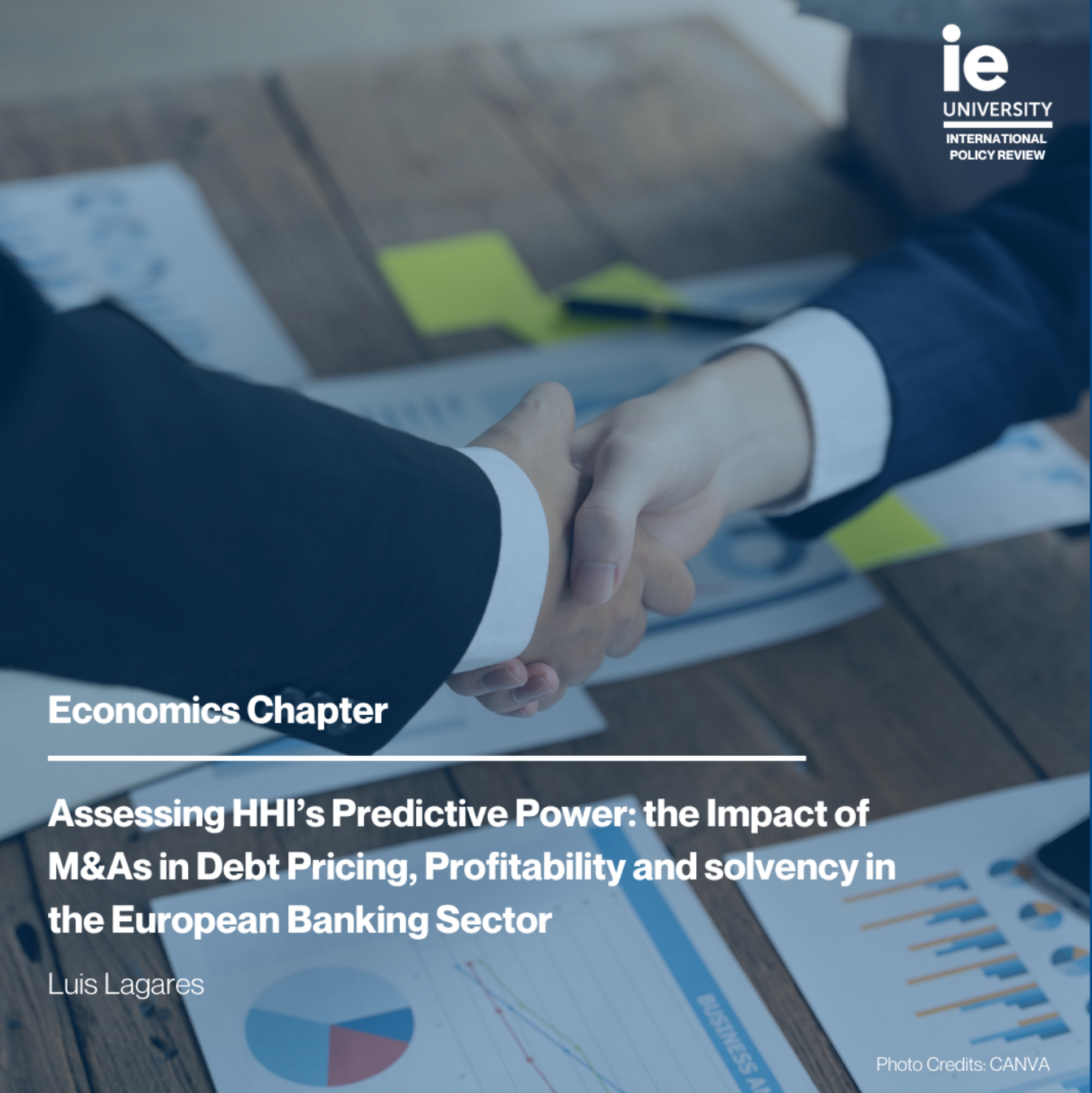
01 Jul Assessing HHI’s Predictive Power: The Impact of M&A in Debt Pricing, Profitability and Solvency in the European Banking Sector
Luis Lagares
IE University
E-mail: llagares.ieu2023@student.ie.edu
Abstract
This study investigates the relationship between banking concentration (measured through HHI variation) and key financial indicators in the European financial system—borrowing costs, profitability, and solvency. The current paper has used a country-by-country approach for determining whether M&As are spurring stability and efficiency of finances or reducing competitiveness and increasing systemic risks. Contrary to the general assumption that increased banking concentration necessarily results in increased borrowing costs, our findings challenge the assumption that greater banking
concentration necessarily leads to increased borrowing costs. In Austria, Belgium, and Estonia, increased market consolidation correlates with reduced borrowing costs, attributable most probably to increased efficiency and good regulation to serve as a check on anti-competitive behaviour. However, in others, such as Germany and the Netherlands, consolidation correlates with increased loan costs, implying lower competition effects. In profitability (ROE), the study takes a different route. In Germany, Hungary, and Croatia, it is M&As that are driving enhanced profitability due to economies of scale and better market positions. In Latvia and Lithuania, though, enhanced concentration appears to be dampening profitability, perhaps due to market inefficiencies and insufficient dynamism. Lastly, in considering solvency, the study reveals a dramatic difference among countries. The PIIGS countries (Spain, Greece, Ireland, Italy, and Portugal) have a positive relationship between solvency and M&As, which implies that consolidation has enhanced financial stability of banking systems during crises. Greater concentration in Austria, Finland, and Slovakia is, however, associated with poorer solvency, being a concern regarding excessive risk-taking under concentrated markets. The results shed light on the fact that bank consolidation has differing impacts in Europe. Level of market competition, regulatory framework, and macroeconomic stability are the most important determinants of the M&A effects. The study concludes with policy recommendations, proposing a balanced M&A policy with less reliance on HHI as a singular risk assessment metric. However, in such economies where concentration poses threats to reduce competition or solvency, targeted regulatory intervention is needed. The future EU regulation of the banking system needs to be working towards preserving competition, strengthening capital, and ensuring consolidation benefits the broader financial stability goals of the Eurozone.
READ THE FULL ARTICLE HERE (Page 73-84)
Keywords: Banking Concentration, M&As, Herfindahl-Hirschman Index, Borrowing Costs, Profitability, Solvency, European Banking Sector

Sorry, the comment form is closed at this time.